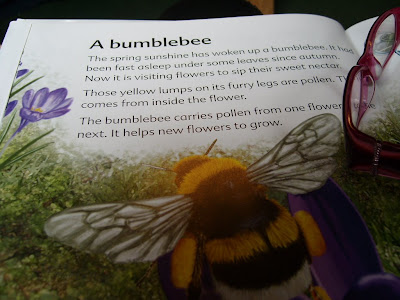 As we plant the first plantings of the year: broad beans in succession - carrots, parsnips, little gem lettuces in plug planters - tomatoes - globe artichokes - I'm reminded of all the things that are possible in a small courtyard space.
As we plant the first plantings of the year: broad beans in succession - carrots, parsnips, little gem lettuces in plug planters - tomatoes - globe artichokes - I'm reminded of all the things that are possible in a small courtyard space.I haven't cropped this photo (so you can see it really is the view from my kitchen with the reflection of the window). I like to keep things real with kitchen gardening, as you know.
Took the photograph last year in summer I think - the Clematis Montana creeping up the wall there had finished flowering.
You can see my pots of rosemary and bayleaf. Although I planted these out on the allotment as they were getting too big.
There's lavender on the staging too, and lots of little gem lettuces in containers. You can also see my blue builders buckets for larger items.
We even made space for a sand pit table for my daughter (in the middle). When she wasn't playing with it I put the plug planters on top.
This year we've rationalised production quite a bit. We have three greenhouses on the right hand side of the yard now. There's nothing much to see yet - but both the first early potatoes (Lady Christl) and the maincrop potatoes (Golden Wonder) are chitting (sprouting) in these as it's a good frost free place that's not too warm.

 I've also started calabrese early in pots.
I've also started calabrese early in pots.There's a bit of mould creeping in on the coir pot there. Must nip it off and make sure the greenhouses are well ventilated. My growing system and my work routine seems to be working really well now, touch wood. Seems a lot less work than it was last year.
I raise the plug plants at home, starting them off with a small heated propagator and use a warm windowsill for the plug planters. As soon as the seedlings begin to show I move them out into the mini-greenhouses to carry on growing and start the next batch inside the house.
When the weather warms up I don't need to grow seeds in the house anymore I can just put the plug planters straight into in the greenhouses. It's all done in a pretty small space, but because I keep moving things on in a shift system - it seems to work. Hope you can make use of these ideas.
When the plug plants or seedlings are big enough and the weather is suitable I cycle down to the allotment and plant them out. There are some who say you shouldn't do this with parsnips and carrots, but mine seem to be okay so maybe no-one explained that to them!
I've got a few other nifty ideas that save space. Instead of buying huge bags of compost, I buy dried, compressed, coir bricks with nutrients. You can get these from good garden centres or the Organic Gardening Catalogue. When I need potting compost I just re-hydrate a brick in a bucket of water and off I go.





 I'm really pleased that this blog now has readers from places as far afield as
I'm really pleased that this blog now has readers from places as far afield as 


